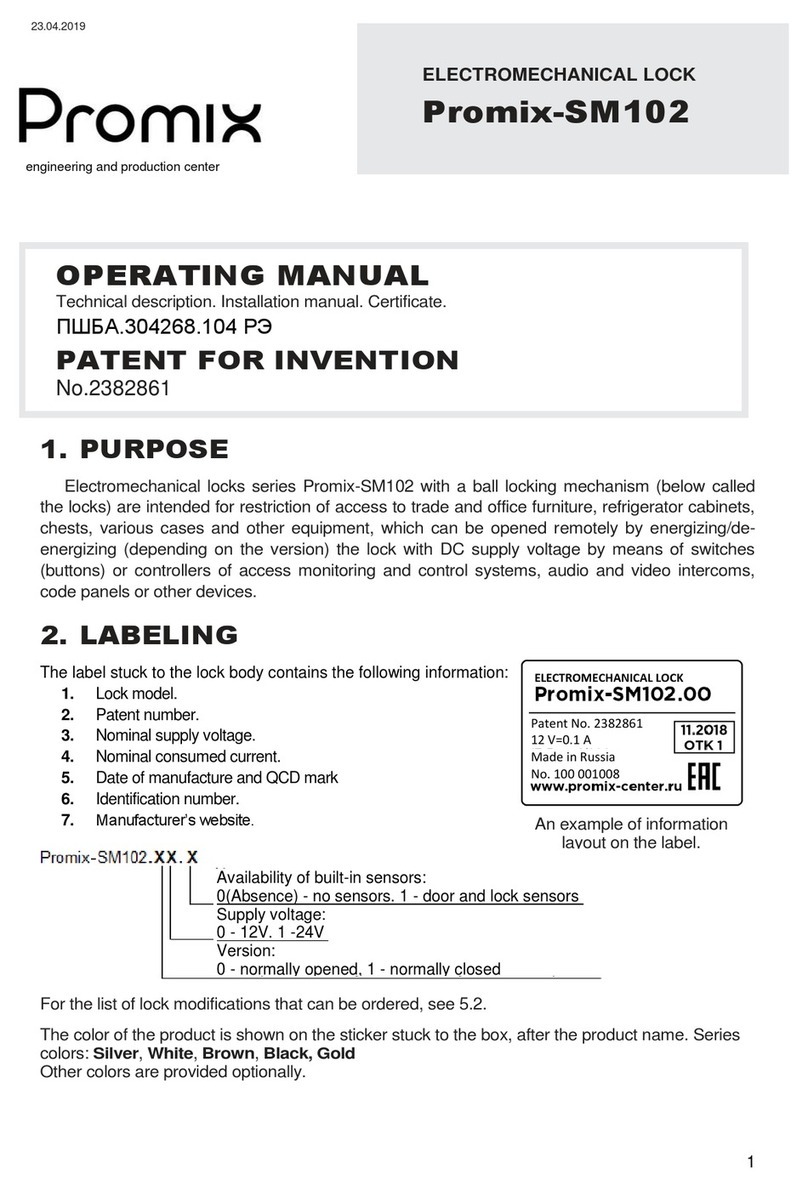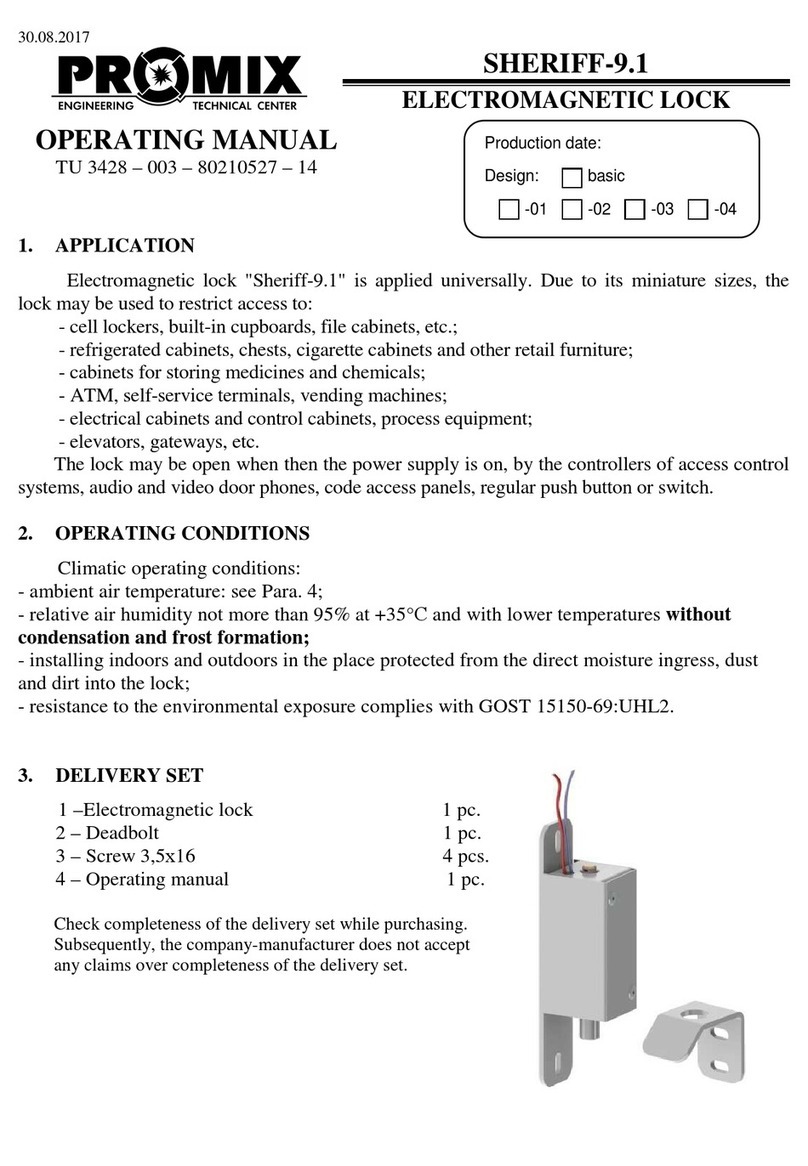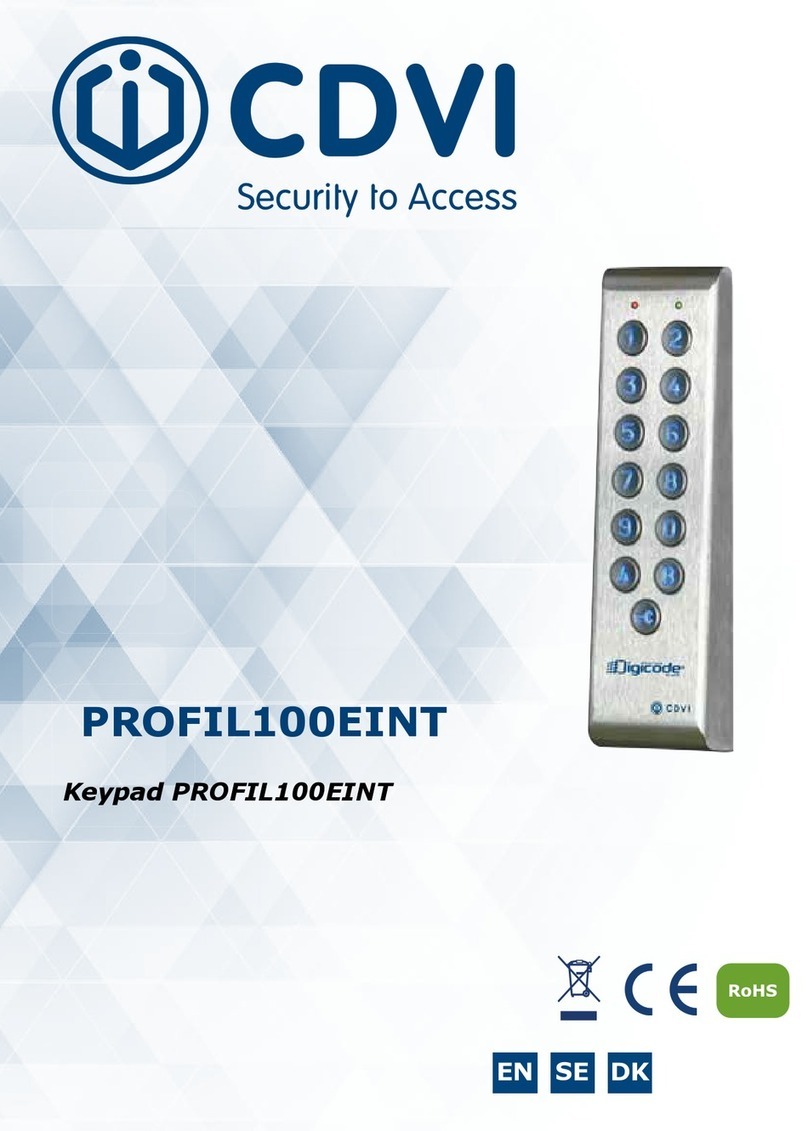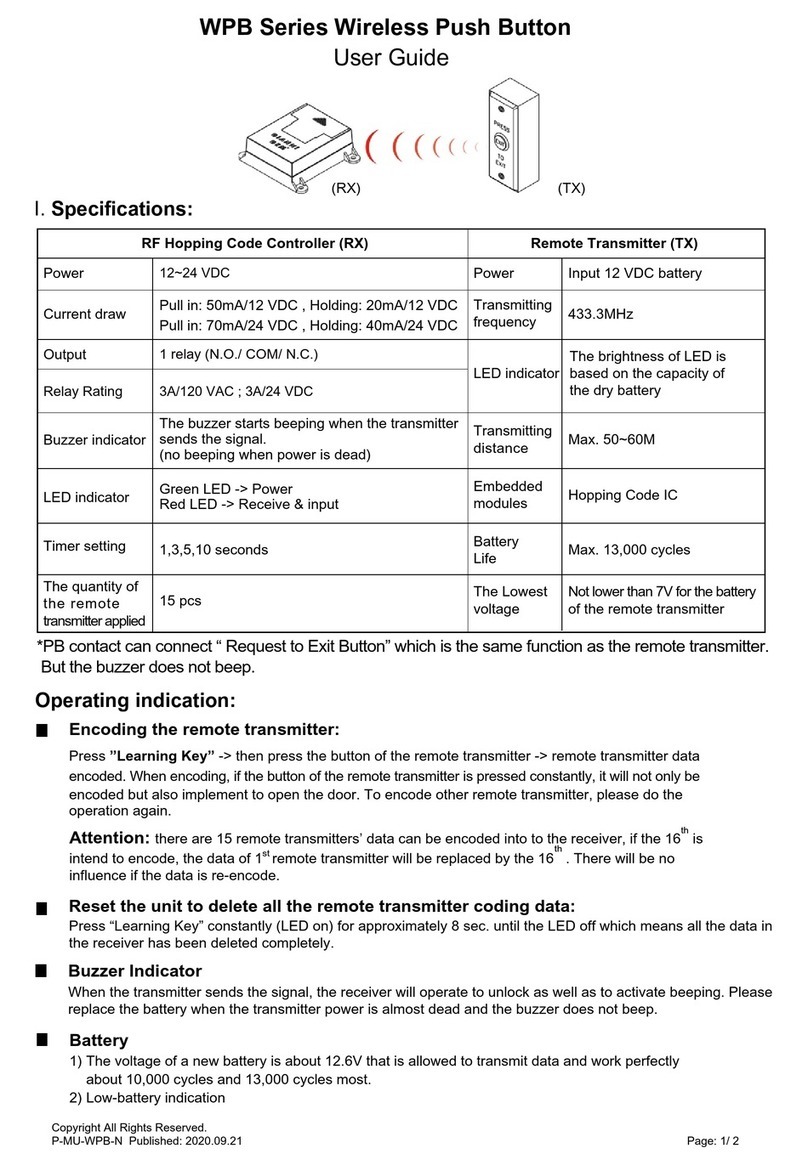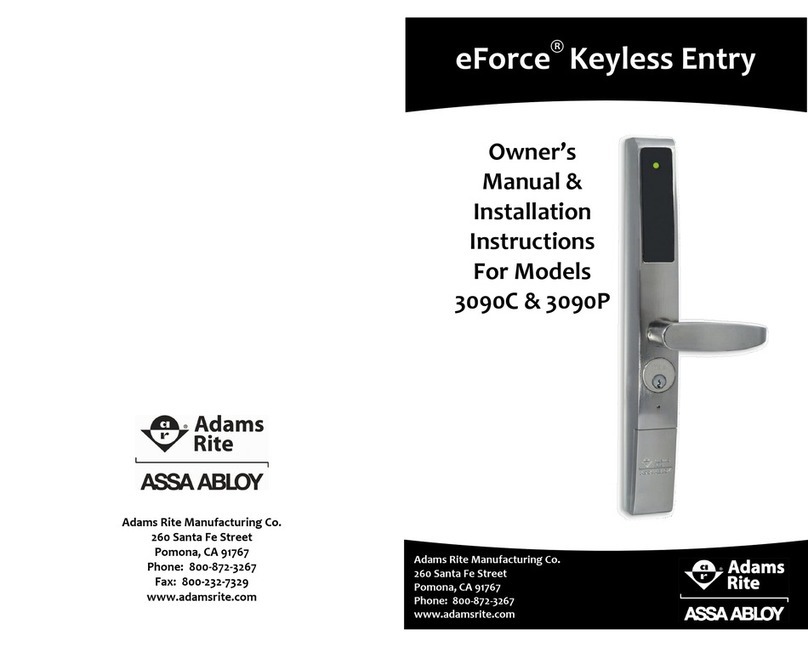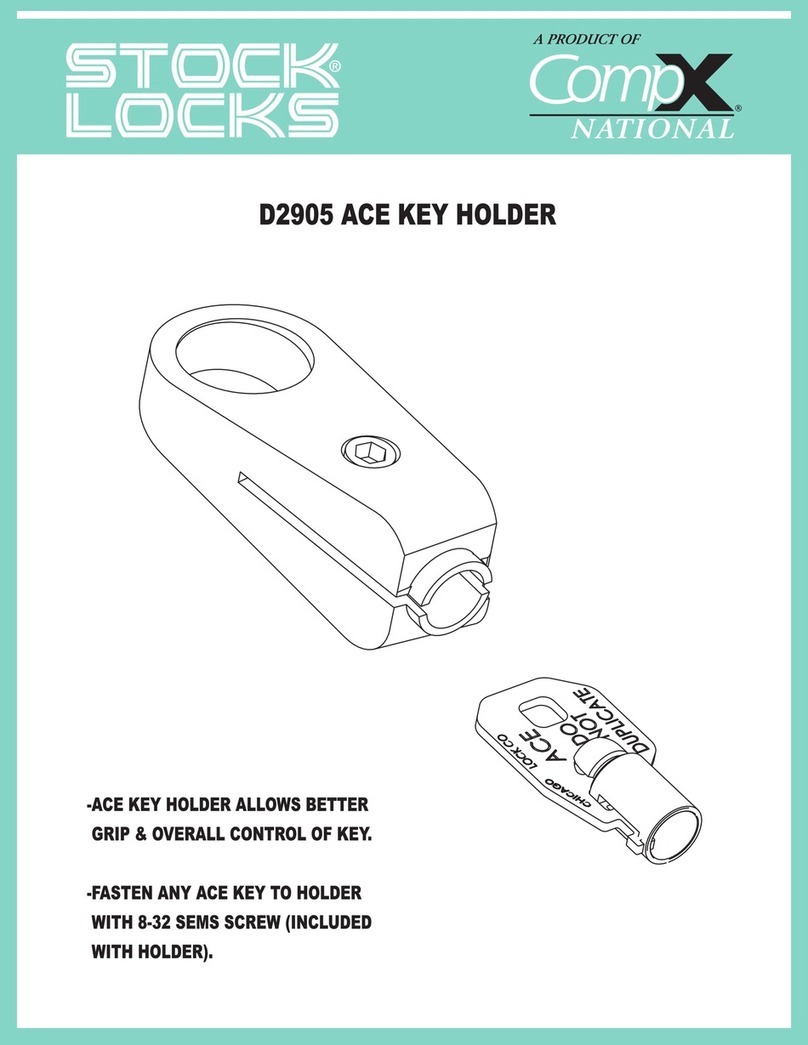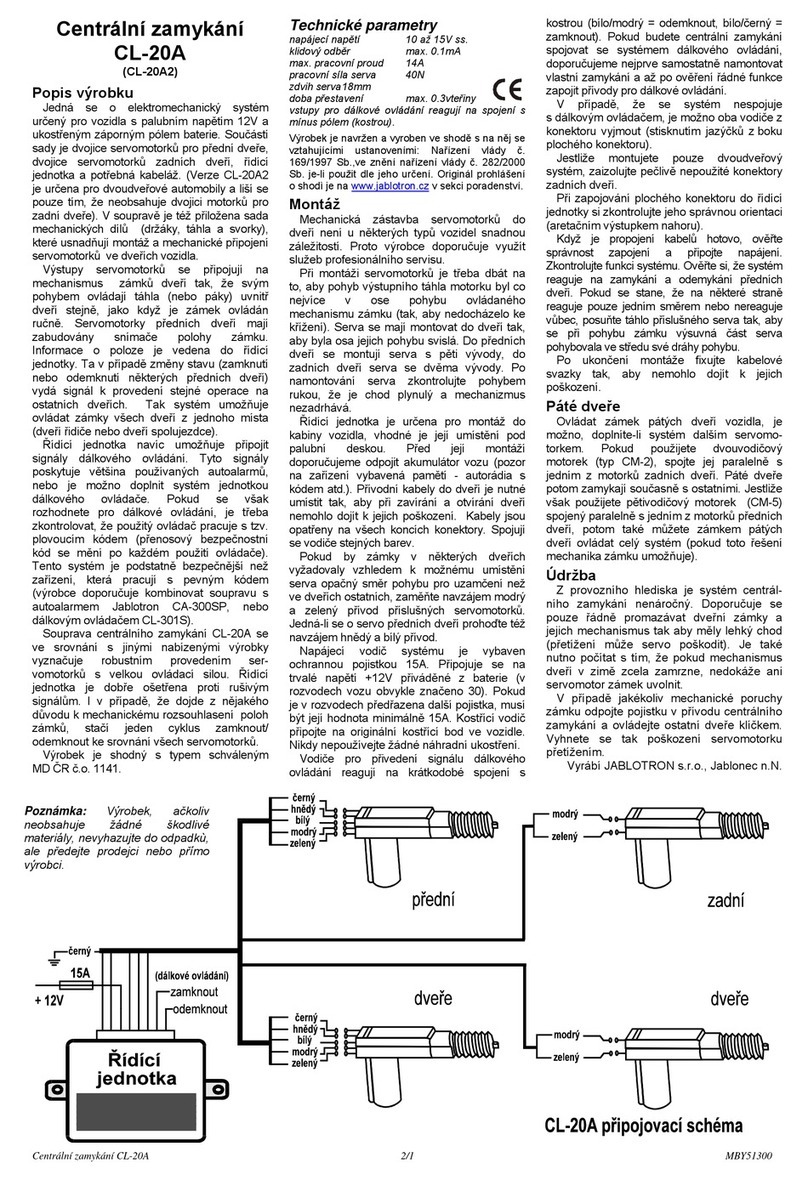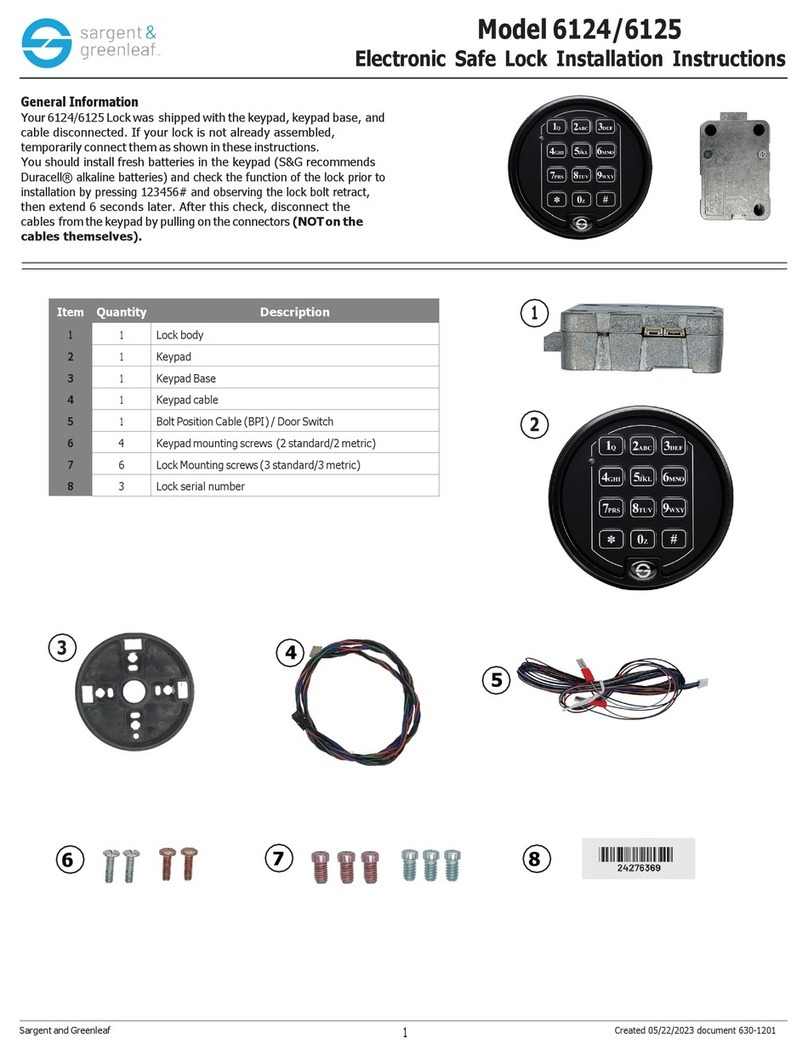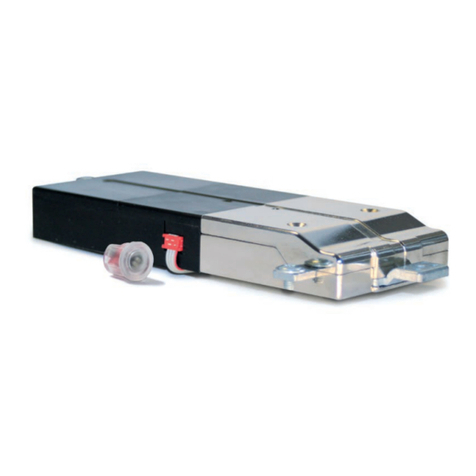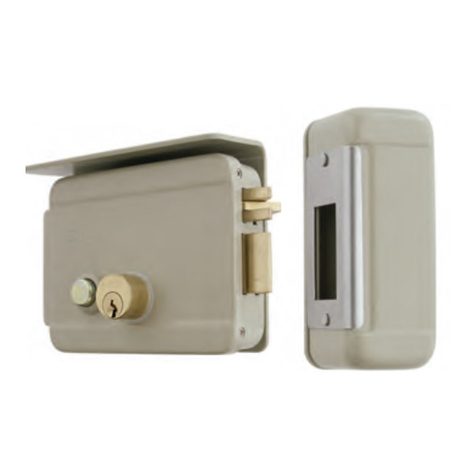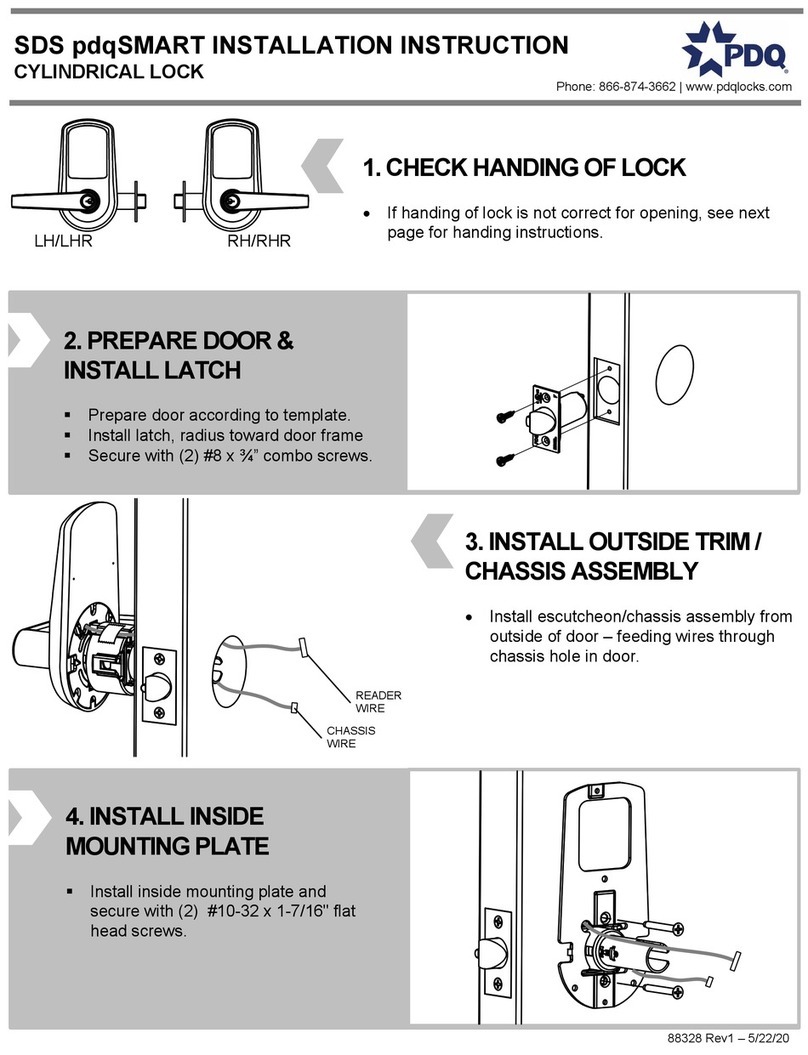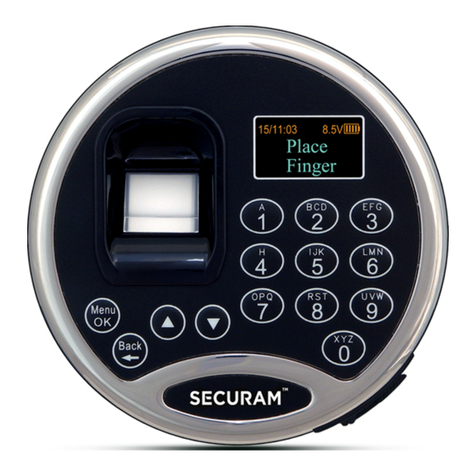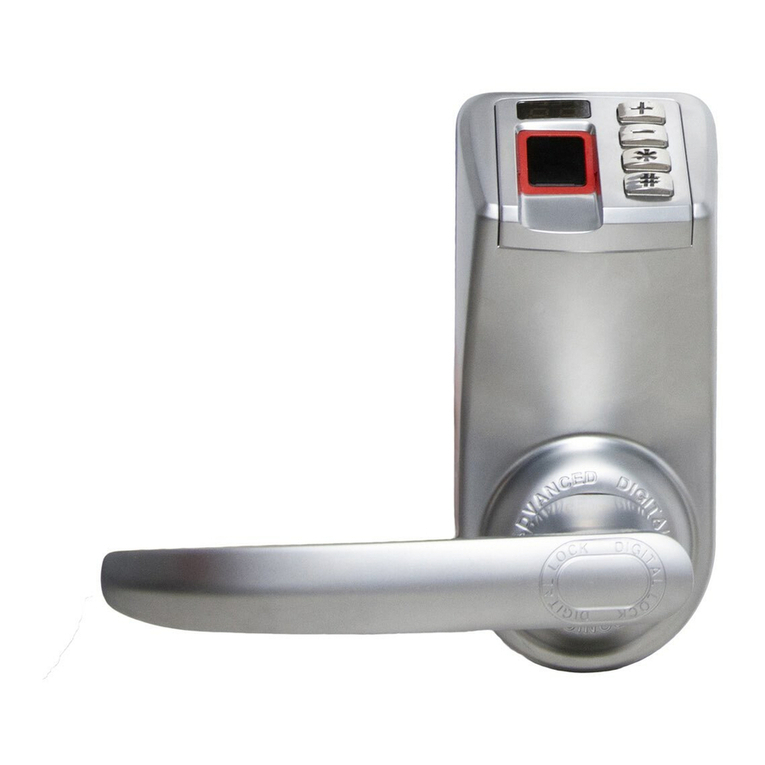PROMIX SM101 User manual

1
OPERATING MANUAL
Technical description. Installation manual. Certificate.
ПШБА.304268.101 РЭ
PATENT FOR INVENTION
No.2382861
05.04.2019
1.
PURPOSE
Electromechanical locks series Promix-SM101 with a ball locking mechanism (hereinafter
referred to as the locks) are intended for locking of swing doors that open both inward and
outward, which can be opened remotely by energizing/de-energizing (depending on the version)
the lock with DC supply voltage by means of switches (buttons) or controllers of access
monitoring and control systems, audio and video intercoms, code panels or other devices. The
lock design and mounting method allow them to be installed inside or outside the protected
premises on practically any door types.
2.
LABELING
The label stuck to the lock body contains the following information:
1. Lock model.
2. Patent number.
3. Nominal supply voltage.
4. Nominal consumed current.
5. Date of manufacture and QCD mark
6. Identification number.
7. Manufacturer’s website.
For the list of lock modifications that can be ordered, see 5.2.
The color of the product is shown on the sticker stuck to the box, after the product name. Series
colors:
Silver
,
White
,
Brown
.
Other colors are provided optionally.
An example of information
layout on the label.
ELECTROMECHANICAL LOCK
Promix-SM101
ELECTROMECHANICAL LOCK
Patent No. 2382861
12 V=0.1 A
Made in Russia
No. 100 001008
Availability of built-in sensors:
0(Absence) - no sensors. 3 - door and lock sensors
Supply voltage:
0 - 12V. 1 -24V
Version:
0 - normally opened, 1 - normally closed
engineering and production center
1
2
5
3,4
6,7

Promix-SM101
2
Check completeness of the lock set when buying! After buying, the
manufacturer will not accept claims related to incomplete set.
3.
SET OF DELIVERY
4.
DESIGN AND PRINCIPLE OF OPERATION
The locks are produced in two versions: normally opened (NO), and normally closed (NC).
NO lock is in the open state when de-energized and in the closed state when the latch is inserted
and voltage is supplied. NC lock is in the closed state when the latch is inserted and no voltage is
supplied, and in the open state when the lock is energized. For opening the door, it is necessary
first to de-energize NO lock or to supply voltage to NC lock; only after that the door can be
opened. A lock of NC version includes additionally “an emergency exit rod” located on the side
opposite to the aperture for latch insertion. For emergency opening the lock, pull the “emergency
exit rod”.
Depending on modification,
NO lock
may be provided with sensors: a door position sensor
and a lock state sensor. The built-in door position sensor consists of a sealed-contact reed relay
mounted on the lock body and a magnet mounted on the mobile sleeve of the lock anddisplaced
by the latch. The reed relay contacts open when the door is opened (the latch is withdrawn from
the lock) and close when the door is closed (the latch is inserted into the lock to a stop).
The built-in lock state sensor consists of a sealed-contact reed relay fixed to the
electromagnetic coil of the lock. The reed relay contact open when the lock is de-energized, and
close when current isflowing through the coil.
Thus, when both sensors are connected in the circuit in series, the circuit will be closed only
when the latch is inserted into the lock (the door is closed) and the lock consumes current (is in
the closed state).
1 –Lock
1 pc.
2 –Bracket
1 pc.
3а –Lock fixture tie M4
2 pcs.
3b –Screw М4х16 (pan head)
2 pcs.
4а –Self-tapping screw 4х30 (cup
head)
2 pcs.
4b –Self-tapping screw 4х30
(countersunk)
2 pcs.
5 –Latch, assembled
1 pc.
6 –Bolt М8х35
1 pc.
7 –Bolt М8х60
1 pc.
8 –Marking tool
1 pc.
9 –Operating manual
1 pc.
10 –Angular bracket with marking
2 pcs.
11 –Bracket fixing template
1 pc.
12 –Screw М4х8 (pan head)
4 pcs.
12а –Nut М4
4 pcs.
12b –Retainer washer for М4
4 pcs.
10
12
12b
6, 7
3b
1
9
4b
2
3а.
12а
.
4b
5
8

Promix-SM101
3
5.
TECHNICAL DATA
5.1 OPERATING CONDITIONS
The lock operation environment must be explosion-safe, free of current-conducting dust or
gases that cause metal corrosion and destroying insulation of current conductors and electric
elements, free of current-carrying dust or water vapor, and preventing ingress of water, steam,
fuel and lubricants.
Climatic conditions of operation –У3.1 as per GOST 15150-69 with extended temperature
range:
ambient temperature: from -30 to +50 °С;
Relative air humidity: not higher than 98% at 25°С or lower temperatures without moisture
condensation and hoar-frost formation;
installation indoors or outdoors excluding ingress of moisture, dust, dirt, etc. inside the lock.
5.2 TECHNICAL DATA
Modification
Promix-
SM101.00
Promix-
SM101.00.3
Promix-
SM101.01.3
Promix-
SM101.01
Promix-
SM101.11
Promix-
SM101.10
Version
normally opened
normally closed
DC supply voltage U, V
12±2
24±2
12±2
Current consumed, А
0.1 (at 12V)
0.05 (at 24V)
0.1
(at 12V)
Operating mode
continuous
Built-in sensors
-
door sensor and
lock sensor
-
Maximum switch current
of the sensor (DC), А:
-
0.5
-
Maximum switch voltage
of the sensor (DC), V:
-
36
-
Sensor output signal type
-
“dry contact”
-
Lock weight (
not more
than
),
kg
0.45
Holding force (
not less
than
),
kg
400
Power wire length, m
0.1

Promix-SM101
4
Lock and latch overall and mounting dimensions.
6.
INSTALLATION AND CONNECTION
6.1 LOCK MOUNTING
Lock mounting depends on door frame ledge width
А.
If the ledge width is
less than 25.5mm
,
use angular brackets
10
. At the place shown (see Fig. below), drill five holes in the angular
bracket: for fastening the lock to the bracket (2 holes), for lead-out of wires (1 hole), for fastening
to the door frame (2 holes). Connect angular brackets to the lock bracket by screws
12
(М4х8)
using nuts
12a
and retaining washers
12b
.
Promix-SM101.00.3; Promix-SM101.01.3
Promix-SM101.00; Promix-SM101.01
Promix-SM101.10; Promix-SM101.11
Sensors module
Emergency exit rod

Promix-SM101
5
Door frame ledge width А (see Fig.) 0…17 mm
Drill five holes 4.2…4.7 mm in diameter at the shown places of the angular bracket. The wide
side of the angular bracket adjoins the lock, and the narrow side - to the door frame.
А, mm
0…2.5
2.5…5.0
5.0…7.5
Place of drilling
А, mm
7.5…10.0
10.0…12.5
12.5…17.0
Place of drilling
Mounting of the latch on the door is described at the end of this section.
Fastening
to door
frame
Fastening to
lock bracket
Place for
wire
Door
frame
DOOR
DOOR
LOCK
LOCK
mm
mm

Promix-SM101
6
Door frame ledge width А (see Fig.) 17…25.5 mm
Drill five holes 4.2…4.7 mm in diameter at the shown places of the angular bracket. The
narrow side of the angular bracket adjoins the lock, and the wide side - to the door
frame.
А, mm
17.0…20.5
20.5…23.0
23.0…25.5
Place of drilling
Mounting of the latch on the door is described at the end of this section.
Fastening
to door
frame
Fastening to
lock bracket
Place for
wire
12
10
12b
12а
Door
frame
DOOR
LOCK
mm

Promix-SM101
7
Door frame ledge width А exceeds 25.5 mm
1. Close the door firmly.
2. Apply the template 11 to the upper corner of
the door frame, on the door handle side. Press
the marked edge of the template snugly to the
door leaf.
3. By piercing the template with an awl, mark hole
centers on the door frame.
4. At marked points, drill 2-mm diameter holes in
the door frame for bracket fixing and a central
5-mm diameter hole for wires.
5. Fix the bracket 2 using two pan-head
screws 4а and two countersunk screws 4b.
6. Having passed the lock wires through the
prepared hole, mount the lock 1on the bracket
2, rotating about ties 3а axis, reach their easily
entering the holes and fix them with screws 3b.
7. Insert the marking tool 8in the opening of
the lock 1.
8. Close the door and press on it.
9. An imprint of the place where a through
hole 8 mm in diameter to be drilled will
remain on the door.
11
DOOR
DOOR
FRAME
2
4а
4b
1
Press on the
door
forcefully
8
2
3b
3а
1
2
3
4
AWL

Promix-SM101
8
See operating voltage range in 5.2. Avoid supply of overvoltage.
10. On the side of fastening of the latch 5, drill a
hole 10 mm in diameter and at least 16 mm
deep.
11. On the outward side of the door, insert the bolt 6
or 7, and sink it in by knocking with a hammer.
12. On the other side of the door, insert the latch 5
and tighten it by hand to a stop. To facilitate
tightening, a metal rod, nail, drill, awl, etc. (not
included in the delivered set) may be inserted in
the side hole of the latch.
13. If necessary, adjust the latch bar length.
14. Mounting of the lock is finished.
6.2 CONNECTING PROCEDURE
The lock operation is controlled by means of energizing and de-energizing. For this purpose, a
controller (control board) or a switch (button) is generally used. The controller is mounted in
accordance with its certificate.
Connect the lock power wires adhering to the following polarity:
Red (black with a red stripe) –positive pole of the power supply;
Black –negative pole of the power supply;
Application of voltage of reverse polarity does not provide the lock operability but does not
make it unserviceable.
Connect sensor leads:
White, Green –output of the lock state sensor
Brown, Yellow –output of the door position sensor.
An example of the lock connection to the remote control system Promix-RDS.
5
min 16
10
8
Ensure
perpendicularity of the
hole to the door plane!!!
6
6, 7
5
Lock
Controller Promix-CR.RX
Remote control
Promix-CR.TX
220 V

Promix-SM101
9
Provide a reliable electriccontact. To prevent short-circuit, insulate places of
connection.
7.
SPECIAL ASPECTS OF INSTALLATION AND
OPERATION
1)
The possibility of using of the locks for restriction of access to the premises and the place of
installation (outdoors or indoors) are determined by the
installation organization
on the
basis of the design features and the mounting method, room criticality level, the purpose of
the access restriction regime and other factors (the presence of security providers, video
surveillance, etc.).
2) When mounting the lock and the latch, it is necessary to ensure their coaxial alignment within
the latch free movement allowance.
3) Length (without the head) of the latch fastening bolt
6
or
7
(selection depends on the door
thickness) must be 3…7 mm shorter than the door thickness; if necessary, shorten the bolt.
4) When the door is closed, the latch must be inserted in the lock
to stop
. The lock does not
open when the door is in a “tension” condition, i.e., when some external force is applied to
open the door, e.g., someone pulls the door handle.
5) The properly mounted lock provides the necessary free motion (play) of the door of 2.5-3 mm.
If the free play is less, NC lock may
fail to open
when energized, and NO lock may
fail to
close
when energized(see section 8).
6) During mounting the NC lock, take care that some person is always on the side of the lock
placement during start-up and adjustment! To open the NC lock manually, press the door
against the door frame and pull the “emergency exit rod”.
7) During operation of the NC lock, availability of the “emergency exit rod” is obligatory! Since it
is necessary to ensure people’s leaving the room in case of emergency.
For all versions of the lock fastening, the distance between the door and the lock body must
be within 12…15 mm for modifications without sensors (10…13.5 mm for modifications with
sensors). The latch bar length is provided for 12-mm distance between the door and the lock
body (10mm for the modification with sensors) and is 19 mm (26.5mm for the modification with
sensors). In case of a longer distance, it is necessary to adjust the length by rotating the latch
bar. The latch bar length must not exceed 21 mm for NO lock, 23 mm for NC lock and 31 mm for
NO lock with sensors.
Latch of NO lock. Latch of NC lock. Latch of NO lock with
sensors.
(ModificationSM101.0X) (ModificationSM101.1X) (ModificationSM101.0X.3)

Promix-SM101
10
8.
TROUBLE-SHOOTING
Troubles and problems
Remedies
NC lock does not open when supply voltage
is applied.
Using a tester, check integrity of the lock power
circuit.
Press the door against the door frame and pull the
emergency exit rod, or apply an elevated voltage
of 20-30V to the lock for a short time. After
opening the lock, increase the latch bar length. To
do this, fix the knurled nut with one hand, and
screw the latch bar out of the nut to the required
length with the other hand (or with flat-nose
pliers).
Increased free play of the latch (more than
3 mm) while the lock is in the closed state.
Decrease the latch bar length. To do this, fix the
knurled nut with one hand, and screw the latch bar
into the nut to the required length with the other
hand (or with flat-nose pliers).
A large clearance between the door and the
door frame as the door is closed (the latch
stops against the inside of the lock).
The lock does not fix the latch (the door is
not closed).
Transfer the lock to the “closed” state (apply or
remove supply voltage, depending on the lock
version). Check polarity and conformity of the lock
supply voltage to the required one.
Fix the knurled nut with one hand, and screw the
latch bar out of the nut to the required length with
the other hand (or with flat-nose pliers).
The door is not opened when transferred to
the “open” state. To open the door, one has
to press it more snugly to the door frame.
Remove the causes of the non-tight door bearing
against the door frame.
Use a door closer.
Increase the latch length.
The door has sunk during use (automatic
latch alignment is insufficient), therefore,
the latch does not enter the lock aperture or
hits the lock as enters.
Restore the door position If this is impossible,
remove the latch fixture from the door. Drill the
hole in the door to increase its diameter. Fasten
the latch to the door ensuring alignment with the
lock aperture.
In a NO lock, the latch is not inserted
completely into the lock (“balls are seized”).
De-energize the lock. Insert a steel rod 3-5 mm in
diameter (screw-driver, drill, etc.) into the lock
aperture to a positive stop and pull it out.

Promix-SM101
11
The lock does not need lubrication!
The warranted operation period is 12 months from the date of sale but not
longer than 18 months from the day of acceptance by the manufacturer’s QCD.
9.
MAINTENANCE
Maintenance of the lock is performed at least once every two monthsand includes:
Visual inspection of the lock to check reliability of fastening. If necessary, tighten fasteners
of the lock and the latch.
Check the latch bar length. If the latch bar abuts against the lock body and this leads to
gapping between the door and the door frame, or if the latch is not fixed when the door is
closed, adjustthe latch bar length (see section 8).
10.
STORAGE AND TRANSPORTATION
Prior to putting into operation, the locks must be stored in the manufacturer’s packing, in
rooms with an ambient temperature of -30 to +50 °С and a relative humidity not higher than 98%
at 25º С in compliance with storage conditions as per GOST 15150-69.
Locks transportation conditions must comply with group C as per GOST 23216-78 in terms of
exposure to mechanical factors, and Ж2 as per GOST 15150-69 in terms of exposure to climatic
factors.
11.
SAFETY REQUIREMENTS
The design of the locksensures safety of personnel involved in mounting and maintenance.
Due to low DC supply voltage, the products correspond to class III as per ГОСТ 12.2.007.0-
75 and are electrically safe.
Fire safety of the locks is ensured by use of non-combustible or hardly combustible materials,
and low supply voltage.
12.
DISPOSAL
The product is not hazardous for human life and health or for the environment; disposal after
its service life is performed without taking any special measures for environment protection.
13.
WARRANTY LIABILITIES
The manufacturer, ETC PROMIX LLC, warrants conformity of Promix-SM101 locks to
requirements of current Technical Specifications provided that transportation, storage, installation
and operation rules established in this Manual are followed.
Within the period of warranty, ETC PROMIX LLC undertakes to repair defective products free
of charge. Expenses for transporting the product to the place of repair and back will be borne by
the Buyer.
Warranty liabilities do not cover any defects and damages caused by:
Improper maintenance by the Buyer;
Use of the product under conditions that do not comply with the operation requirements;
Mechanical damages or disassembly of the products bythe Buyer;
Non-observance of the transportation and storage rules.

Promix-SM101
12
To improve product quality the manufacturing plant reserves the right to make
modifications to the product design without prior notice.
Faulty products are accepted for repair only together with the latch, on the
obligatory condition that factory labels are retained on the product body.
On expiration of the warranty service period, the manufacturer provides after-warranty service
on a contractualbasis.
14.
ACCEPTANCE AND PACKING
CERTIFICATE
Electromechanical lock Promix-SM101
in quantity of ____ pieces (1 pc. by default)
bearing the
manufacturing date and QCD mark on the body, was manufactured and accepted in compliance
with Specifications ПШБА.304268.001 ТУ, obligatory requirements of state standards and
current technical documentation, recognized as fit for operation and packed by ETC PROMIX
LLC.
PROMIX Engineering and Technical Center LLC
Russia, 214030, Smolensk, Krasninskoye sh., 35, lit. A
Phone: (4812) 619-330
www.promix-center.ru
vk.com/promixcenter
facebook.com/promixcenter
mail@promix-center.ru
Table of contents
Other PROMIX Lock manuals
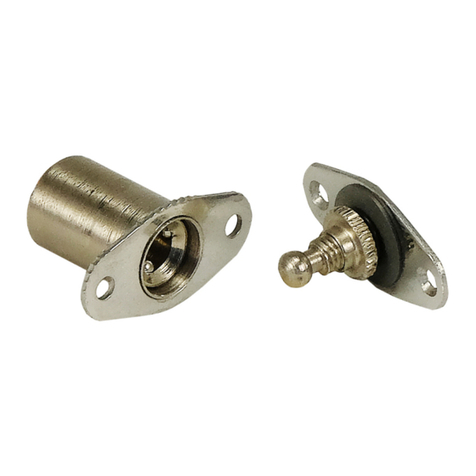
PROMIX
PROMIX Promix-SM132 Series User manual
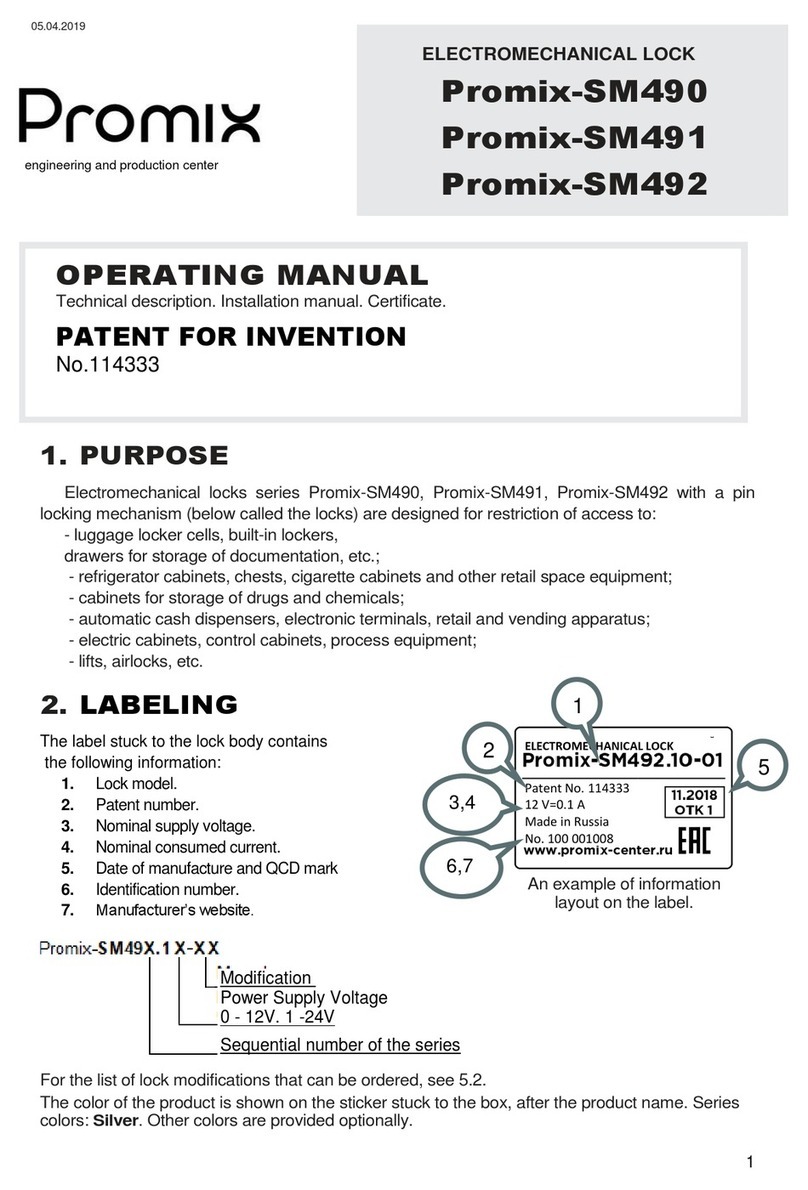
PROMIX
PROMIX SM490 User manual
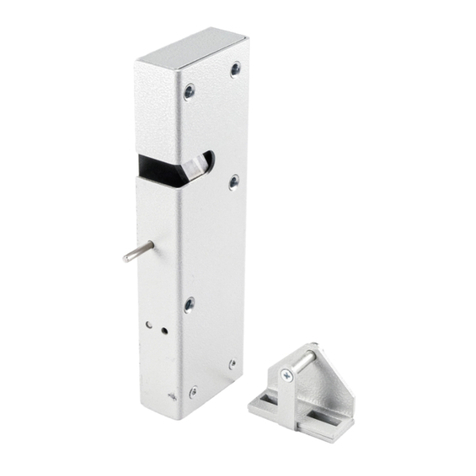
PROMIX
PROMIX SM 323 User manual

PROMIX
PROMIX SHERIFF-5 User manual
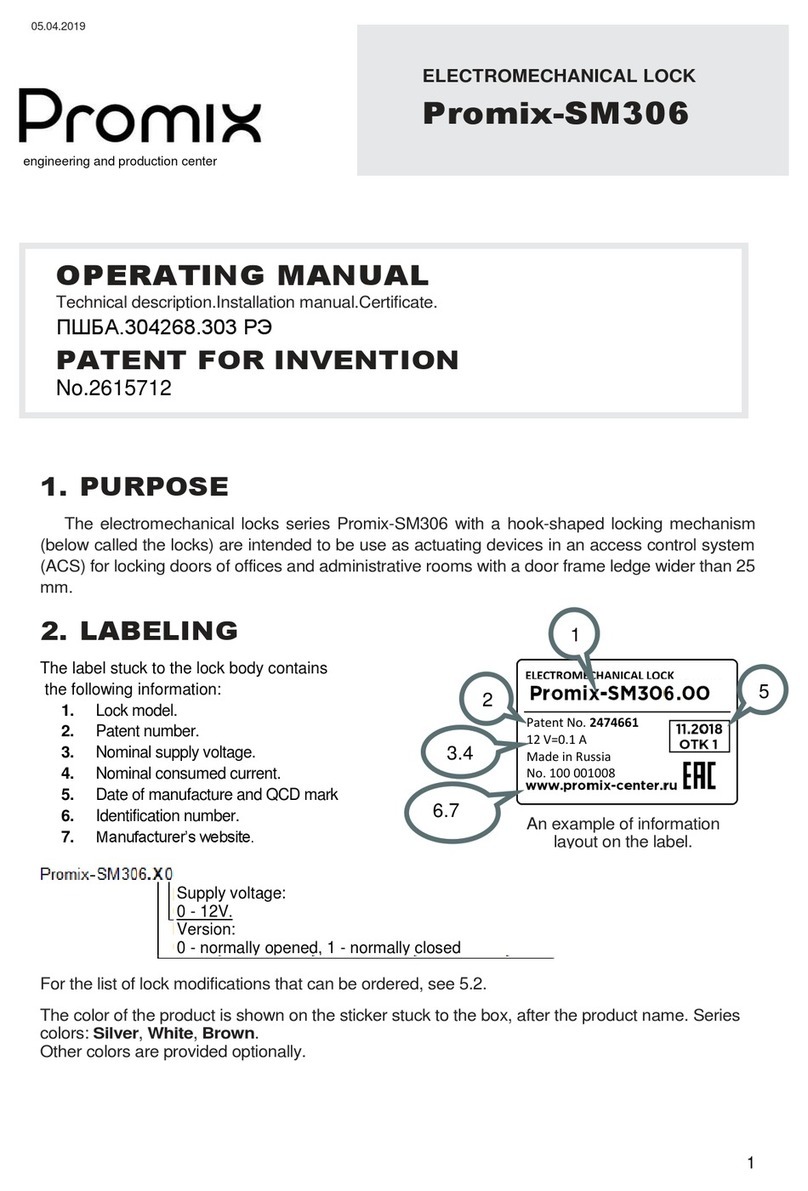
PROMIX
PROMIX Promix-SM306 User manual
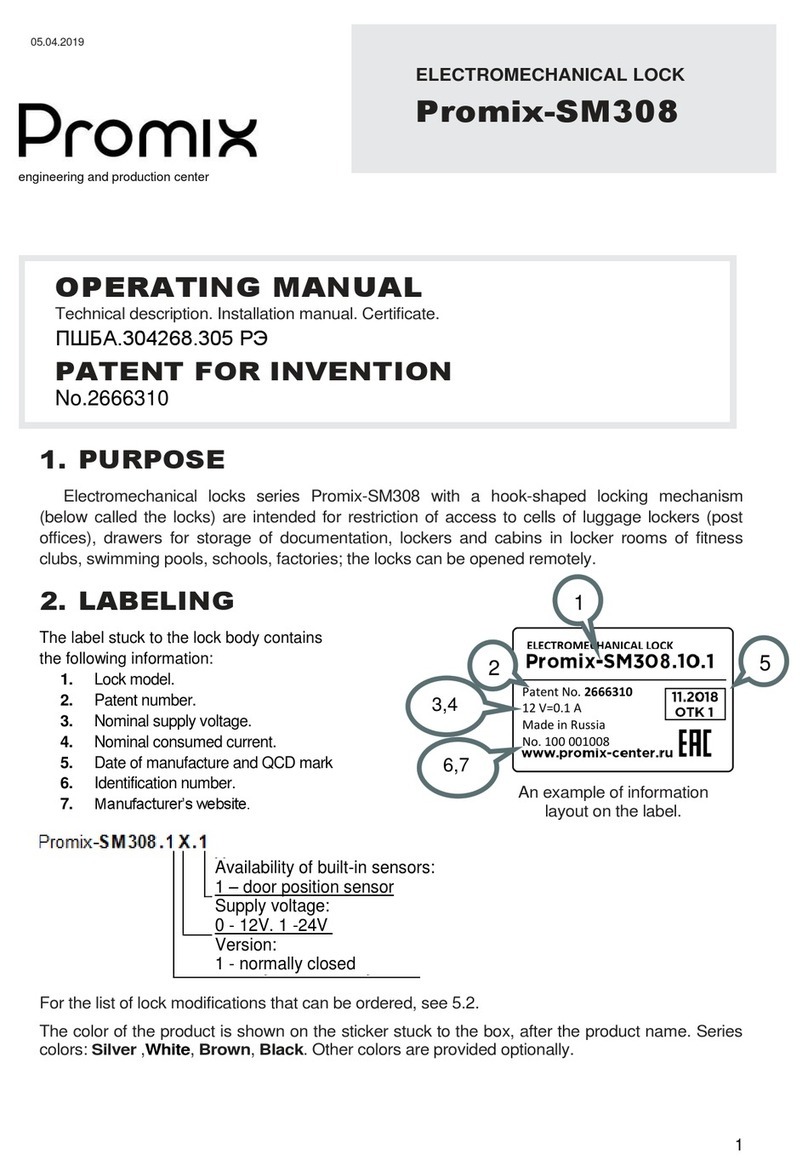
PROMIX
PROMIX Promix-SM308.10.1 User manual
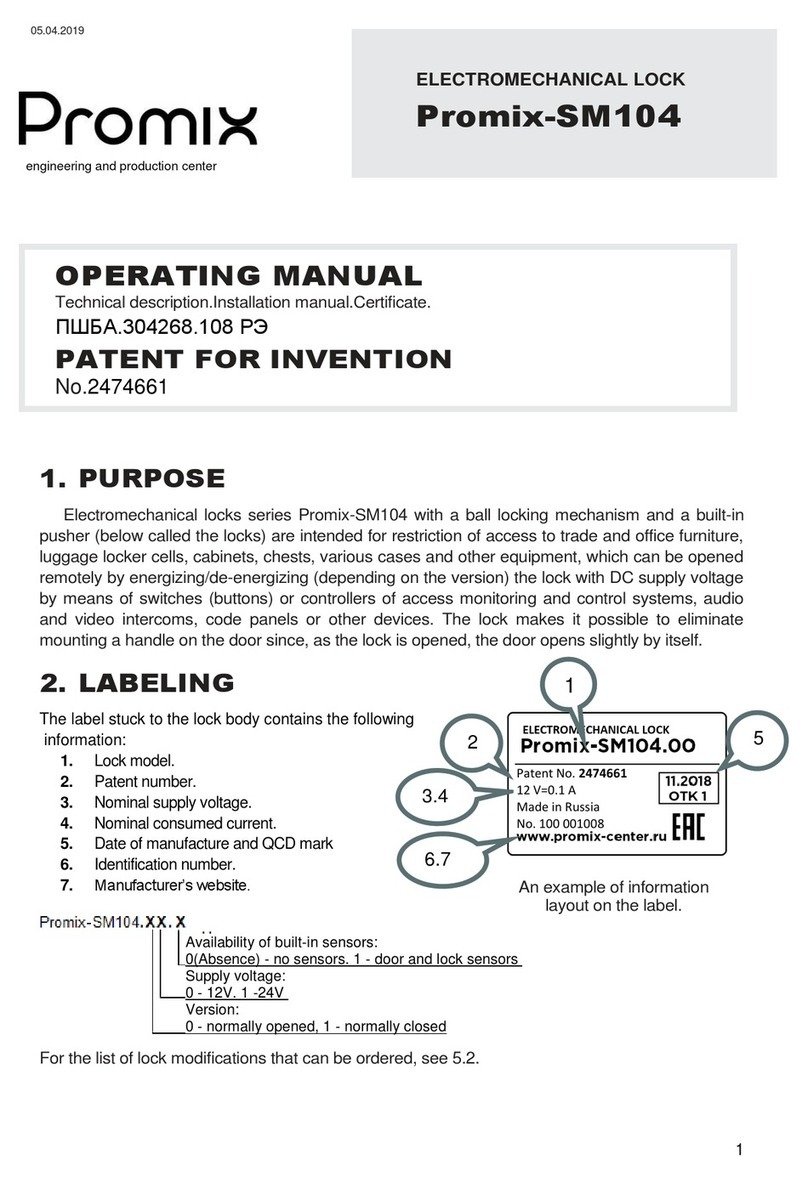
PROMIX
PROMIX Promix-SM104 Series User manual
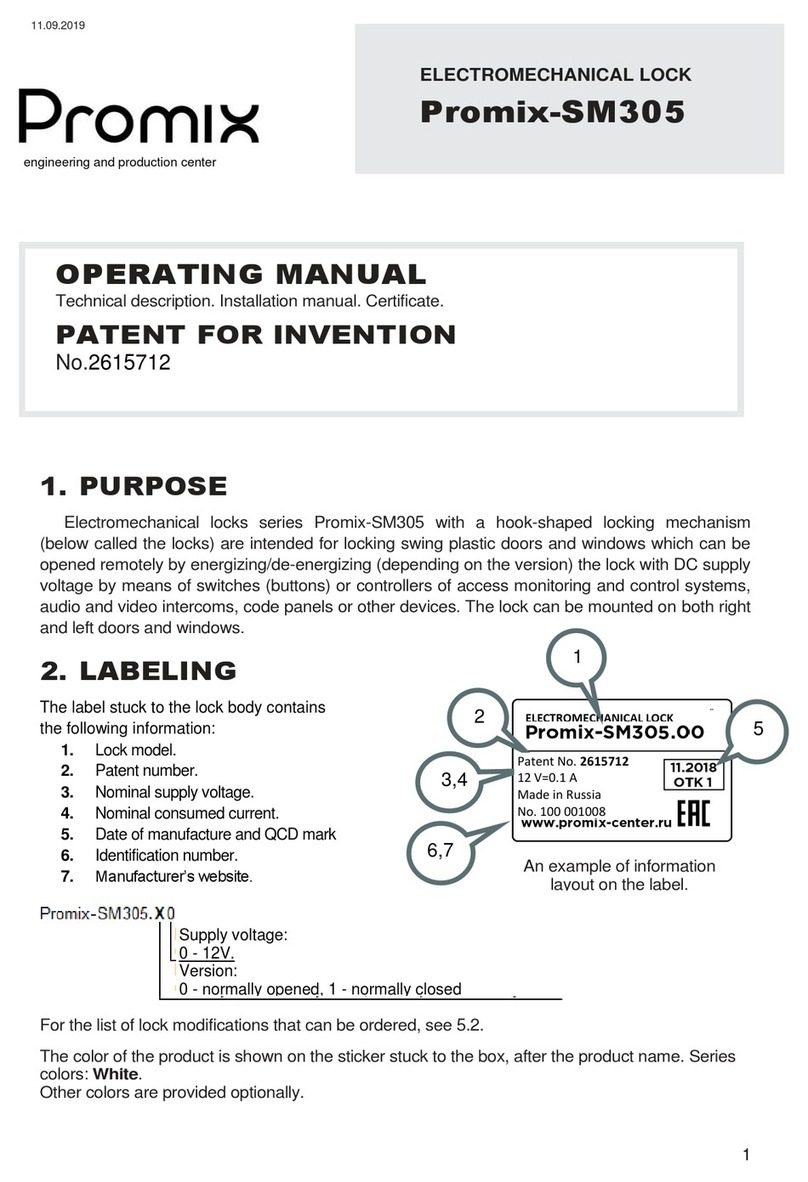
PROMIX
PROMIX SM305 User manual
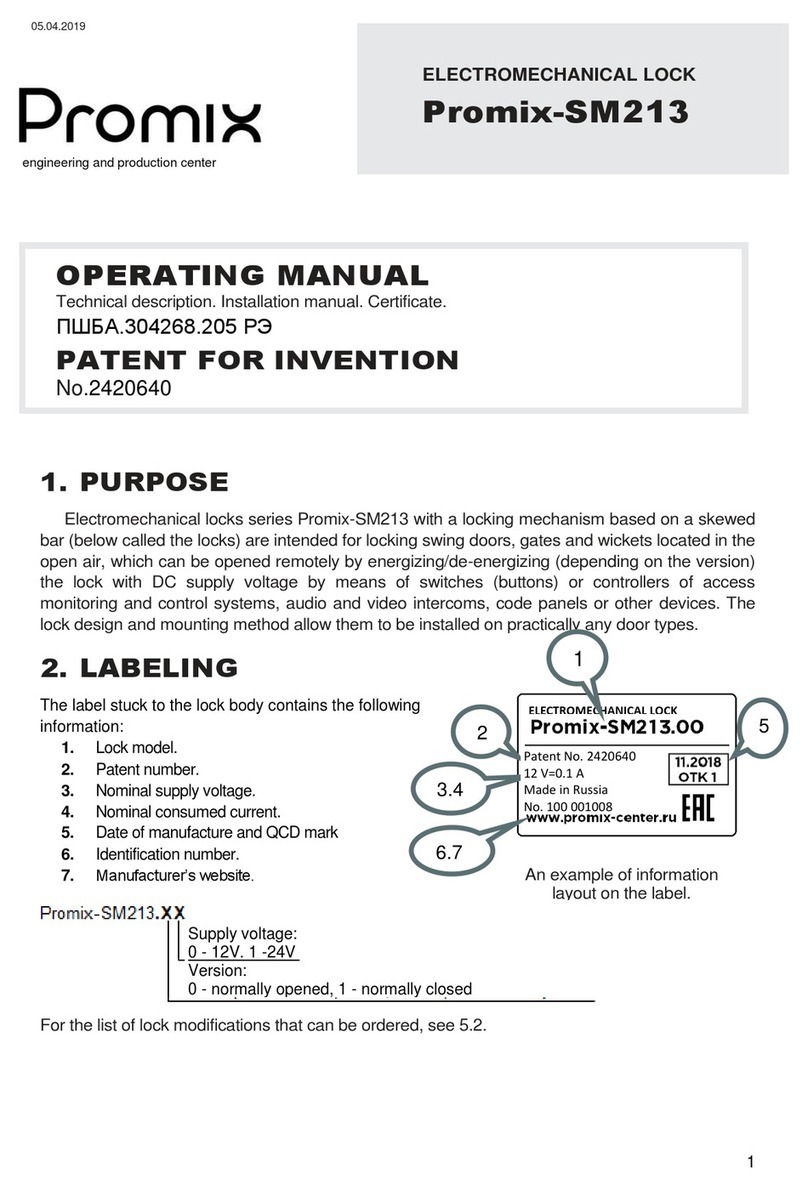
PROMIX
PROMIX Promix-SM213 User manual
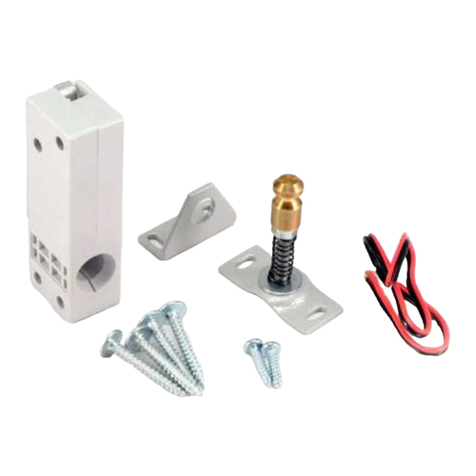
PROMIX
PROMIX Promix-SM420 User manual
Popular Lock manuals by other brands
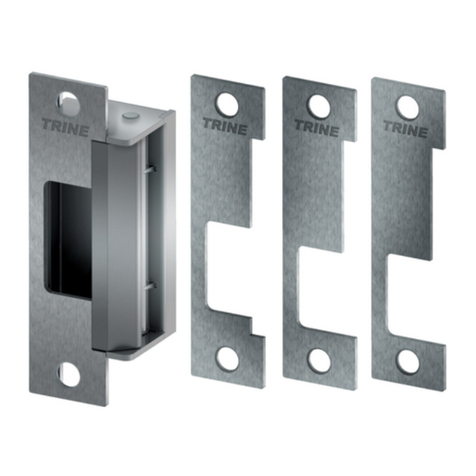
Trine
Trine 4100 Electric Strike installation instructions

WALDIS
WALDIS CAWI BLUECAM operating instructions
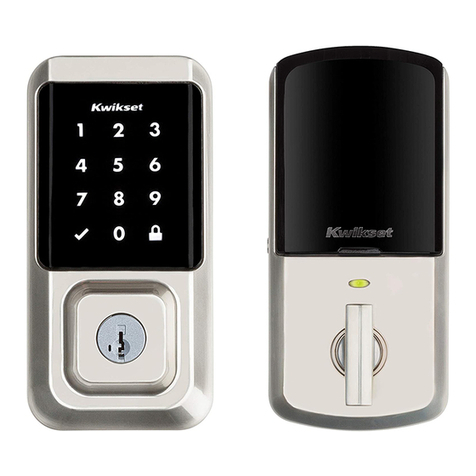
Kwikset
Kwikset HALO Installation and user guide
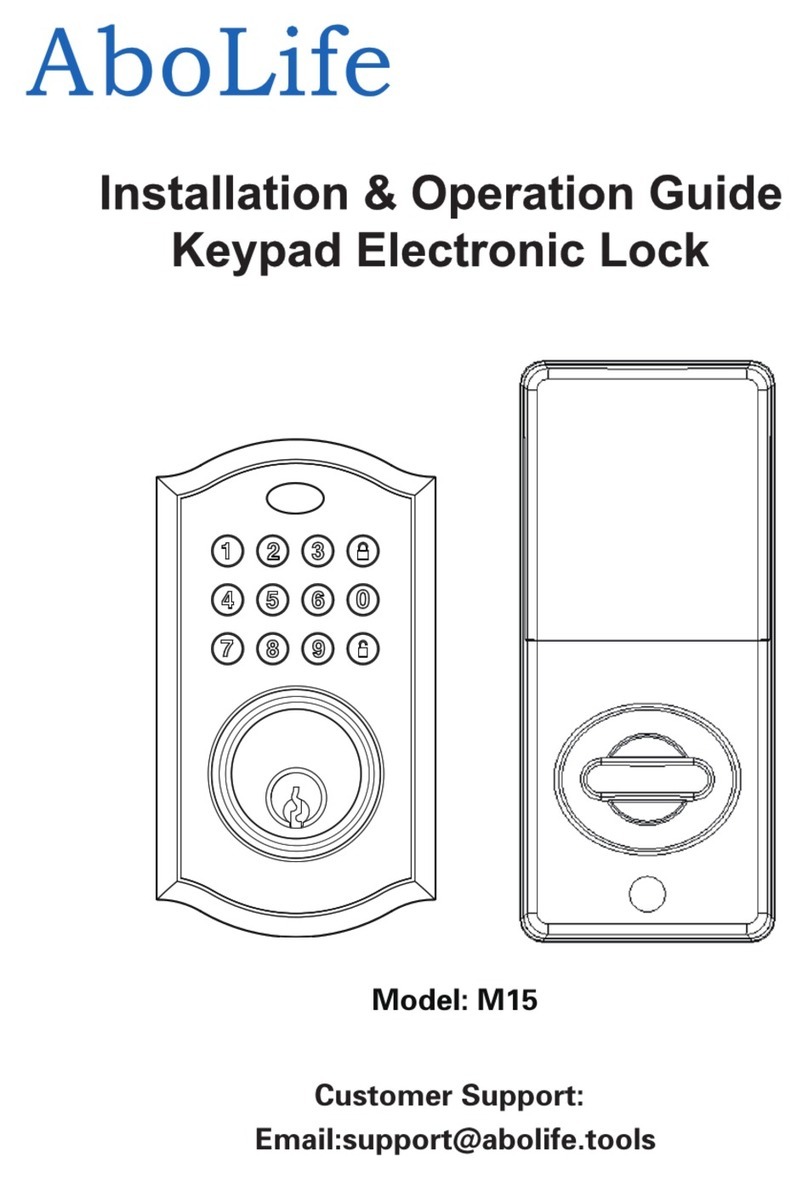
AboLife
AboLife M15 Operation guide
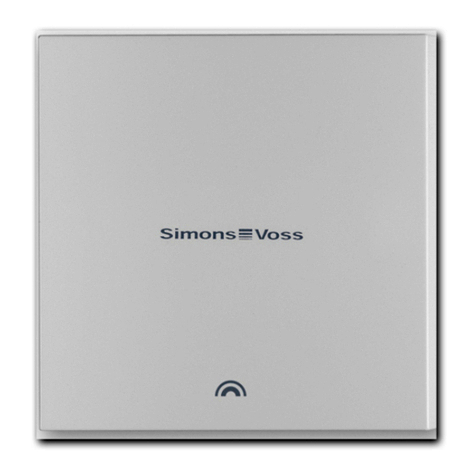
Simons Voss Technologies
Simons Voss Technologies LockNode SREL2.G2 quick guide

Waferlock
Waferlock C-700 Series user manual
